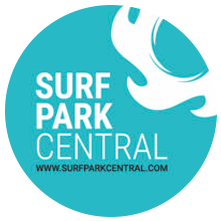Surf Park Central is always working hard to bring you the latest from the surf-anchored development industry. From exclusive talks and presentations at Surf Park Summit to white papers and studies on our INSIDERS program, SPC is the place for all things surf parks.
We’re excited to announce the addition of three new white papers from Ashley Presser of Aquatics Risk Services International. Presser works to deliver impactful, evidence-based solutions and nationally recognised training, designed to meet your objectives, and cultivate a generative safety culture.
Here’s a look at three new papers. You can read the full studies by becoming a member of INSIDERS.
Comparable Industry Insights to Understand Surf Park Safety: A Systematic Literature Review
Surf parks are emerging worldwide as a new form of leisure, but unlike other recreational industries, little research has been done on their risks, safety standards, or regulatory frameworks. This white paper explores what can be learned from comparable industries—from trampoline parks to aquatic sports—to better understand the unique challenges surf parks present around health, liability, and public safety. By analyzing existing literature across law, recreation, and injury prevention, the review highlights critical gaps in knowledge and underscores the urgent need for industry-specific research and guidance.
Unlike many other recreational industries, surf parks operate in a space with limited regulation, raising questions about safety, liability, and legal responsibility. This paper teases out how gaps in oversight, combined with the complexities of technology and operations, create unique risks for both operators and participants. By examining lessons from other industries and reviewing how health and safety laws apply, the study highlights why surf parks must take proactive steps to build strong safety cultures and mitigate risk before regulation inevitably catches up.
Exploring Risk Perception in Surf Park Environments
As the surf park industry evolves, so do its safety challenges. Unlike established sectors, these artificial wave environments face unique complexities in how risk is perceived, communicated, and managed. A new literature review explores the psychology behind risk perception—how emotion, culture, and experience shape decision-making—while examining the role of social dynamics and communication in workplace safety.































You must be logged in to post a comment Login